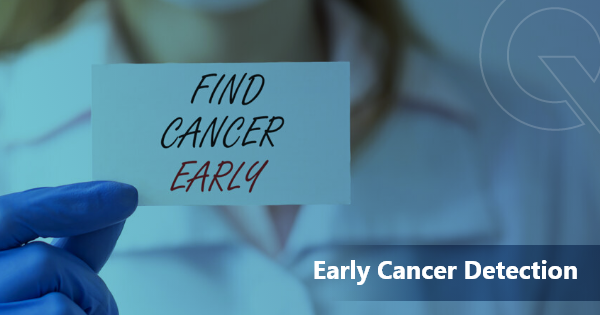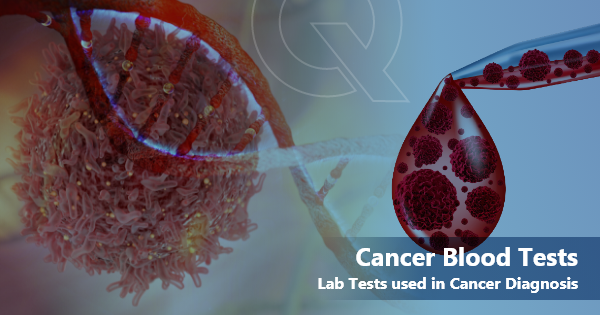Cancer, a formidable adversary that claims millions of lives worldwide each year, has spurred remarkable progress in the field of medical science. While treatment options have improved, early detection remains pivotal for improving survival rates and patient outcomes. In this blog, we will delve into the exciting developments in early cancer detection tests, exploring subtopics that highlight the latest breakthroughs and their potential to save lives.
Contents
Imperative of Early Detection
Early cancer detection is of paramount importance in significantly improving treatment outcomes and enhancing the chances of a successful recovery. Here’s why early detection is so crucial:
1. Higher Treatment Success Rates:
– Early detection often means that cancer is diagnosed at a localized or regional stage when it’s confined to a specific area of the body or nearby lymph nodes. At this stage, treatment options are generally more effective and less aggressive, leading to better outcomes.
2. More Treatment Options:
– When cancer is detected early, patients have a broader range of treatment choices available. These options may include surgery, radiation therapy, targeted therapies, immunotherapy, or a combination of these modalities. Late-stage cancer may limit treatment options and effectiveness.
3. Improved Quality of Life:
– Early detection can spare patients from the physical and emotional toll of more aggressive treatments. Less invasive treatments often result in fewer side effects and a better overall quality of life during and after treatment.
4. Reduced Healthcare Costs:
– Early-stage cancer treatment is generally less expensive than treating advanced-stage cancer. It can reduce the financial burden on patients, healthcare systems, and society as a whole.
Now, let’s highlight statistics that illustrate the significant difference in survival rates between early and late-stage cancer diagnoses:
1. Breast Cancer:
– According to the American Cancer Society, the 5-year survival rate for localized breast cancer is about 99%. However, if breast cancer has already spread to distant parts of the body at the time of diagnosis, the 5-year survival rate drops to around 28%.
2. Colorectal Cancer:
– The 5-year survival rate for localized colorectal cancer is approximately 90%. In contrast, the 5-year survival rate for colorectal cancer that has metastasized to distant organs is around 14%.
3. Lung Cancer:
– For localized lung cancer, the 5-year survival rate is about 59%. Unfortunately, when lung cancer is diagnosed at a distant stage, the 5-year survival rate decreases to only 6%.
4. Prostate Cancer:
– The 5-year survival rate for localized prostate cancer is nearly 100%. In contrast, when prostate cancer is diagnosed at an advanced stage with distant metastasis, the 5-year survival rate drops to approximately 30%.
These statistics underscore the dramatic difference in survival rates based on the stage of cancer at diagnosis. Early detection not only increases the likelihood of successful treatment but can also greatly extend a patient’s life. Regular cancer screenings, awareness of risk factors, and prompt medical attention for concerning symptoms are essential in the fight against cancer.
What is a liquid biopsies test?
Liquid biopsies represent a groundbreaking approach in the field of medical diagnostics, particularly in cancer detection and monitoring. These tests are designed to detect biomarkers, such as DNA, RNA, or proteins, released into bodily fluids like blood, urine, or cerebrospinal fluid, offering a non-invasive alternative to traditional tissue biopsies. Here’s a breakdown of the concept, pioneers in the field, and their advantages:
1. Concept and How They Work:
Liquid biopsies capitalize on the fact that cancer cells release various substances into the bloodstream or other bodily fluids. These substances, known as biomarkers, can provide critical information about the presence, type, stage, and progression of cancer. Liquid biopsies primarily focus on the detection of circulating tumor DNA (ctDNA), circulating tumor cells (CTCs), and tumor-derived exosomes.
– Circulating Tumor DNA (ctDNA): This involves the identification of fragments of tumor DNA present in the bloodstream. Genetic mutations or alterations specific to the cancer can be detected through ctDNA analysis.
– Circulating Tumor Cells (CTCs): CTCs are cancer cells that have detached from the primary tumor and entered the bloodstream. Liquid biopsies can isolate and analyze these cells to gain insights into the cancer’s characteristics.
– Tumor-Derived Exosomes: Exosomes are tiny vesicles released by cells, including cancer cells. They contain various molecules, including genetic material and proteins, which can be examined to understand cancer progression.
2. Pioneering Companies:
Several companies have played a significant role in advancing liquid biopsy technology. Notable examples include:
– Guardant Health: Known for their Guardant360 liquid biopsy test, which analyzes ctDNA to detect cancer mutations and guide treatment decisions.
– GRAIL: A subsidiary of Illumina, GRAIL has developed the Galleri test, which aims to detect multiple types of cancer at an early stage by analyzing ctDNA in the blood.
– Exact Sciences: Through their subsidiary, Thrive Earlier Detection, Exact Sciences is working on liquid biopsy technology for early cancer detection.
– Roche: Roche offers the cobas® EGFR Mutation Test v2, a liquid biopsy test for detecting EGFR mutations in lung cancer.
3. Advantages of Liquid Biopsies:
Liquid biopsies offer several significant advantages:
– Non-Invasiveness: Traditional tissue biopsies often involve surgery or uncomfortable procedures. Liquid biopsies, on the other hand, require only a blood or fluid sample, making them much less invasive and more patient-friendly.
– Early Detection: Liquid biopsies can potentially detect cancer at earlier stages, when it is more treatable, by identifying biomarkers associated with malignancies.
– Monitoring: Liquid biopsies allow for real-time monitoring of cancer progression and treatment response, offering valuable insights to oncologists for personalized treatment plans.
– Routine Screening: Liquid biopsies have the potential to become part of routine healthcare, similar to blood tests or mammograms, making cancer screening more accessible and convenient.
What is the MCED Test?
Multi-Cancer Early Detection (MCED) tests, as previously mentioned, are a cutting-edge approach to cancer screening and diagnosis. These tests aim to identify the presence of multiple types of cancer at an early stage by analyzing specific biomarkers, such as fragments of DNA, RNA, or proteins, that are released into the bloodstream by cancer cells.
Key points about MCED tests include:
1. Early Detection: MCED tests are designed to detect cancer at an early and more treatable stage, often before symptoms manifest. This can lead to improved treatment outcomes.
2. Non-Invasive: MCED tests are typically non-invasive and require a simple blood draw, making them more patient-friendly compared to traditional cancer screenings or biopsies.
3. Multiple Cancer Types: These tests have the potential to screen for a variety of cancer types simultaneously, providing a comprehensive assessment of a person’s cancer risk.
4. AI and Biomarkers: MCED tests often leverage artificial intelligence (AI) algorithms to analyze the biomarkers present in the blood sample and determine the likelihood of cancer and its potential origin.
5. Ongoing Research: While MCED tests hold promise, extensive research is ongoing to validate their accuracy and effectiveness in larger populations. It’s important to establish their reliability before widespread adoption.
6. Cancer Moonshot Initiative: Initiatives like the Cancer Moonshot in the United States support research into MCED tests and aim to integrate them into routine medical care for early cancer detection.
Targeted Tests for Specific Cancers
Specialized tests for specific cancer types play a crucial role in early detection, risk assessment, and targeted screening. Here are examples of such tests for cervical cancer and prostate cancer, and how they offer tailored solutions:
1. Cervical Cancer:
– Pap Smear: The Pap smear, also known as a Pap test or cervical cytology, is a widely used screening test for cervical cancer. It involves collecting a sample of cells from the cervix and examining them under a microscope to detect any abnormal changes. These changes may indicate the presence of precancerous or cancerous cells.
– HPV Test: Human papillomavirus (HPV) is a known risk factor for cervical cancer. HPV testing can identify the presence of high-risk HPV strains in cervical cells. In some cases, both Pap smear and HPV tests are performed together (co-testing) to improve the accuracy of cervical cancer screening.
– Tailored Solution: These tests are tailored to cervical cancer by directly assessing cervical cells and the presence of HPV, which is a primary cause of this cancer. Early detection through these tests allows for timely intervention, often preventing the progression of precancerous lesions to cervical cancer.
The Future of Early Cancer Detection
The future of early cancer detection holds great promise, driven by evolving technologies, ongoing research, and innovative approaches. Here’s an outlook on what we can expect:
1. Advanced Screening Technologies:
– Emerging technologies such as liquid biopsies and multi-cancer early detection (MCED) tests are likely to become more refined and reliable. These tests may eventually be integrated into routine healthcare, providing a non-invasive and comprehensive approach to cancer screening.
2. Artificial Intelligence (AI):
– AI and machine learning algorithms will play a pivotal role in the analysis of medical data. They will help identify subtle patterns and biomarkers associated with cancer, improving the accuracy of early detection methods.
3. Genomic Sequencing:
– Genomic sequencing and personalized medicine will continue to advance. Genetic profiling will allow for a better understanding of an individual’s cancer risk and enable tailored screening and treatment plans.
4. Biomarker Discovery:
– Ongoing research will lead to the discovery of new biomarkers for various cancer types. These biomarkers will enable the development of more specific and sensitive screening tests.
5. Clinical Trials and Studies:
– Numerous clinical trials are exploring innovative approaches to early cancer detection. For example, the CancerSEEK study is investigating a blood test that can detect multiple cancer types. These trials aim to validate the effectiveness of new screening methods.
6. Telemedicine and Remote Monitoring:
– Telemedicine and remote monitoring will become increasingly important for cancer screening and follow-up. Patients can access screening tests and consultations more conveniently, especially in underserved areas.
7. Public Awareness and Education:
– Public awareness campaigns will continue to stress the importance of regular cancer screenings and early detection. Education and outreach efforts will empower individuals to take proactive steps in their health.
8. Integration into Primary Care:
– Early cancer detection methods may become integrated into routine primary care, similar to other preventive screenings like cholesterol checks and vaccinations. This integration could lead to more widespread and convenient access to screening.
Innovation and research will be central to the advancement of early cancer detection. Breakthroughs in technology, diagnostics, and our understanding of cancer biology will collectively contribute to earlier diagnoses and, ultimately, better outcomes for individuals facing cancer. It’s a collaborative effort involving healthcare professionals, researchers, and technology developers to make early cancer detection more effective, accessible, and a standard part of healthcare in the future.
Conclusion
Early cancer detection tests represent a beacon of hope in the fight against this devastating disease. By exploring subtopics ranging from liquid biopsies and AI to targeted tests and multi-cancer screening, we’ve gained insights into the cutting-edge developments that are reshaping cancer diagnosis. While challenges persist, the progress made in early detection is a testament to the relentless pursuit of solutions that can ultimately save lives and bring us closer to conquering cancer.
Frequently asked Questions
Q1:What are the methods of screening and early detection of cancer?
A1:Cancer diagnosis often involves various imaging tests, including computerized tomography (CT) scans, bone scans, magnetic resonance imaging (MRI), positron emission tomography (PET) scans, ultrasounds, and X-rays, among others. Additionally, biopsies are performed, where a sample of cells is collected by your doctor for laboratory testing.
Q2:What is the early detection of cancer?
A2:Early cancer diagnosis aims to identify symptomatic patients at the earliest possible stage to maximize their chances of successful treatment. Delayed or limited access to cancer care reduces survival rates, increases treatment complexities, and leads to higher healthcare costs.
Q3:Why is cancer screening important?
A3:Cancer screening involves the search for cancer in individuals who exhibit no symptoms. These tests are valuable in detecting cancer at an early stage, often before any symptoms manifest. Early detection of abnormal tissue or cancer facilitates more manageable and potentially curative treatment. Conversely, when symptoms emerge, cancer may have already advanced and spread, making treatment more challenging.


![Blood Test for Hair Loss [Male/Female] Blood Test for Hair Loss](https://oncquest-blog.s3.ap-south-1.amazonaws.com/blog/wp-content/uploads/2023/12/12044200/Blood-Test-for-Hair-Loss.webp)


